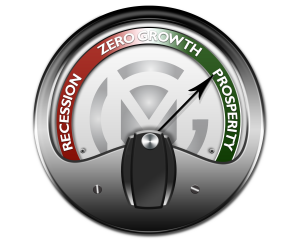 Four times a year Greater Mankato Growth distributes a survey to area businesses regarding multiple metrics in order to gather how the economy performed during previous quarter and what businesses project for the upcoming quarter. Additionally, a unique inquiry is posed in each quarter to gain topical insight to the local economy.
Four times a year Greater Mankato Growth distributes a survey to area businesses regarding multiple metrics in order to gather how the economy performed during previous quarter and what businesses project for the upcoming quarter. Additionally, a unique inquiry is posed in each quarter to gain topical insight to the local economy.
The fourth quarter, October – December, was strong for the Greater Mankato economy. The strong end of year was forecasted in the previous survey as well, as business projected that nearly all metrics would be up versus the same time last year.
Respondents provided feedback on six metrics regarding their business for the 4th quarter: Revenue, Profit, Employment Change, Capital Expenditures, R&D spending and New Customer Acquisition.
Below the overall trend for the economy is presented first for each metric, followed by industries showing noticeable change. Noticeable change means a majority of businesses in that sector responded with “up” or “down.”
Revenue – 67.5% up or same (up 40%, same 27.5%). Industries experiencing the most change (up or down) were construction with 55.6% of businesses saying their revenue was down as compared to last year. 60% of manufacturing businesses say their revenue was up compared to last year in the 4th quarter.
Profit – Split fairly evenly (up 42.5%, down 36.3%). Industries experiencing the most change (up or down) were manufacturing with 66.7% of businesses saying their revenue was up as compared to last year. 66.7% of construction businesses say their revenue was down as compared to last year in the 4th quarter.
Employment Change – Steady with little change (same 55%). Manufacturing was the only industry with noticeable change (up or down) with 46.7% of businesses saying their employment was up as compared to last year in the 4th quarter.
Capital Expenditures – Steady with little change (43.8% same). Both Information and Finance/Insurance had noticeable change with 50% of businesses in both sectors reporting an increase from the 4th quarter of last year.
R&D Spending – Steady with little change (same 75%). No industries had noticeable change.
New Customer Acquisition – 80% up or same (up 42.5%, same 37.5%). While businesses in many industries reported an increase of new customer acquisition, only Information had a noticeable majority with 50% of businesses reporting an increase from the 4th quarter of last year.
Q1 2017 Forecast
Businesses were split among all metrics in their forecast for the 1st quarter of 2017. Either a majority predicted the metric to remain the same or the responses were equally split among “up”, “down”, and “same.”
The construction industry was the only sector that had noticeable change projected among all metrics. A clear majority look for Q1 2017 to be down from the year before.
Business Concerns
Businesses were asked to rank their level of concern on a scale of 1 -5 (5 being high) among 6 areas: workforce availability, Minnesota regulations/permitting, labor costs, operational costs, state political climate and national political climate. The largest area of concern is the national political climate despite the challenges in workforce development (Workforce availability 2nd, Labor Costs 3rd). This is a continuing trend despite the end of the election cycle.
| Concern | Points |
| National political climate | 303 |
| Workforce availability | 285 |
| Labor Costs | 276 |
| State political climate | 270 |
| Minnesota regulation, permitting | 253 |
| Operational Costs (w/o labor) | 248 |
Quarterly Question: “What percent of your workforce will be at retirement age of 65 in the next five years? ” AND “Of that number, how many do you estimate will work beyond retirement age?”
A majority of businesses, 66%, say only “0-10%” of their workforce will be at retirement age of 65 in the next 5 years. Only 1-in-13 businesses will be facing 30% or more of their workforce at retirement age. It’s expected that only 40% of workers reaching retirement age will retire.
The construction industry looks to be the youngest industry with a majority of businesses in that sector looking at only “0 – 10%” of their labor force at retirement age in the coming years.
The GMG Economic Barometer was sent electronically to nearly 2,000 area business leaders from January 15 – February 3 with 75 reporting. The survey included GMG members and non-members as respondents.




